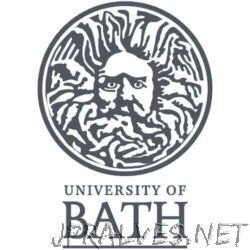Other
News New polystyrene recycling process could be world’s first to be both economical and energy-efficient

“Engineers have modelled a new way to recycle polystyrene that could become the first viable way of making the material reusable. The team of chemical engineers, based at the University of Bath in the UK and Worcester Polytechnic Institute in …

“Physicists have created an optical fibre that uses the maths concept of topology to remain robust, thereby guaranteeing the high-speed transfer of information. Optical fibres are the backbone of our modern information networks. From long-range communication over the internet to …

“Scientists at Bath found that incorporating sugar units into polymers makes them more degradable when exposed to UV light. Many plastics that are labelled as biodegradable are only compostable under industrial conditions, but scientists at the University of Bath have …

“Physicists at the University of Bath observe a new physical effect in chiral (twisted) nanoparticles. Physics researchers at the University of Bath discover a new physical effect relating to the interactions between light and twisted materials – an effect that is …

“Extremely low-density graphene-based aerogel ‘meringue’ can improve passenger comfort and reduce noise up to 80% An incredibly light new material that can reduce aircraft engine noise and improve passenger comfort has been developed at the University of Bath. The graphene …

“Physicists at Bath have uncovered a new mechanism for enabling magnetism and superconductivity to co-exist in the same material. Physicists at the University of Bath, in collaboration with researchers from the USA, have uncovered a new mechanism for enabling magnetism …

“Physicists at the University of Bath observe modified energy landscapes at the intersection of 2D materials. In 1884, Edwin Abbott wrote the novel Flatland: A Romance in Many Dimensions as a satire of Victorian hierarchy. He imagined a world that …
News Distant stars spiralling towards a collision give clues to the forces that bind sub-atomic particles

“Bath space scientists have found a new way to probe the internal structure of neutron stars, giving clues about the makeup of matter at an atomic level. Space scientists at the University of Bath have found a new way to …

“Researchers exploring the interactions between light particles, photons and matter find that optical microresonators host quasiparticles made by two photons. Scientists at the University of Bath have found a way to bind together two photons of different colours, paving the …

“For the first time, labs around the world can 3D print their own precision microscopes, thanks to an open-source design created at Bath. For the first time, labs around the world can 3D print their own precision microscopes to analyse …

